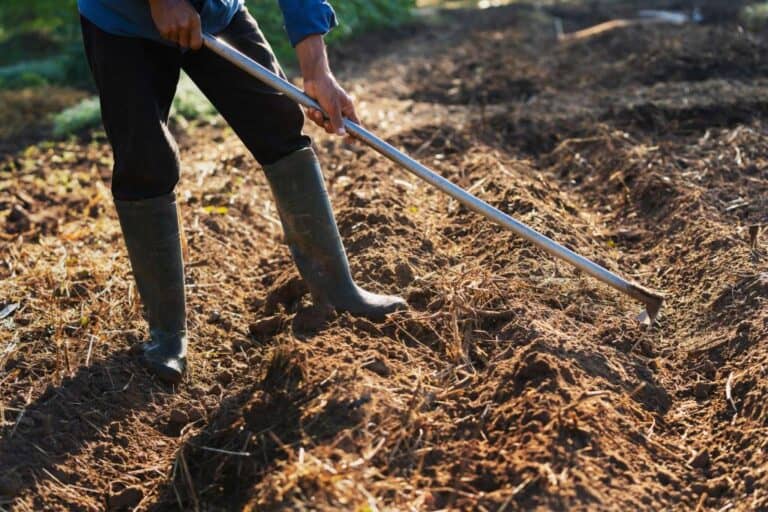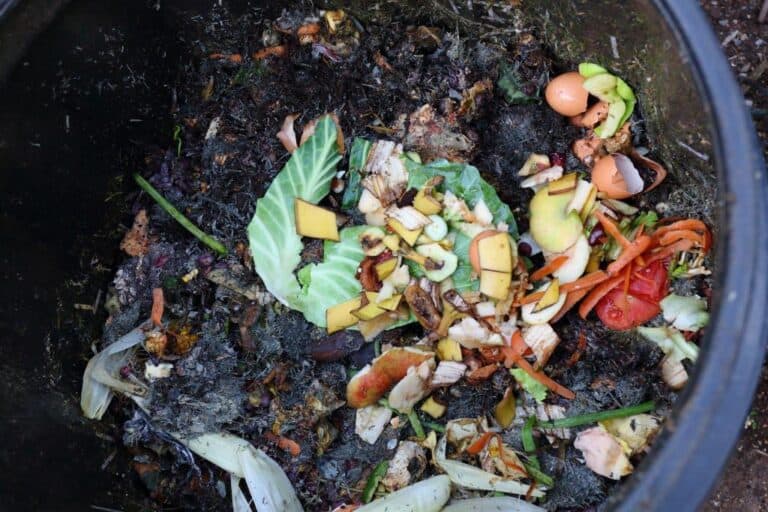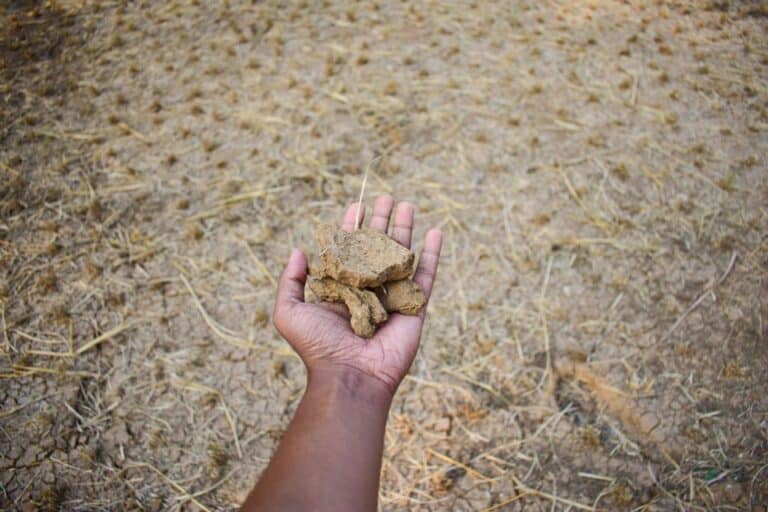Does Boiling Water Harm Your Garden Soil? Unveiling the Truth
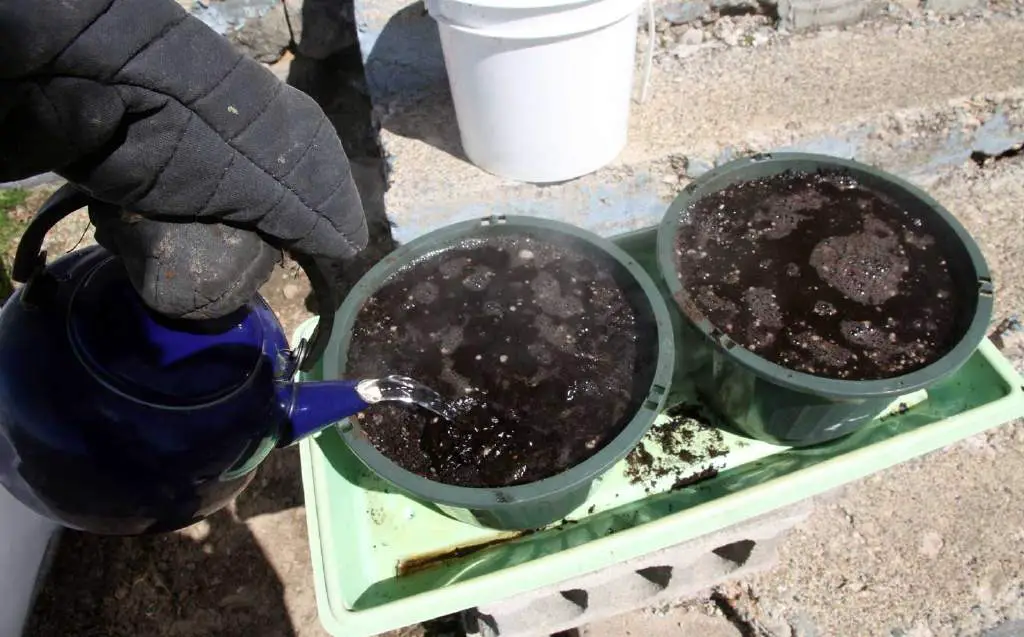
Picture a flourishing garden, vibrant with colors and teeming with life. Every gardener’s dream is to create a haven where plants thrive, and bear the fruits of their labor.
Soil health plays a pivotal role in this botanical masterpiece, and many gardeners seek ways to ensure it remains a nurturing environment. One age-old practice that has gained traction is soil sterilization with boiling water. But is this method a true savior or a hidden foe? Does boiling water harm your garden soil?
While the high heat from boiling water can kill off weed seeds, insects, and pathogens present in the soil, it may not be a reliable or thorough method.
In this horticultural journey, we’ll delve into the truth behind using boiling water to sterilize garden soil. We’ll explore the pros and cons, weighing the benefits against potential pitfalls. Moreover, we’ll unveil alternative techniques that promise a flourishing garden without compromising the delicate balance of nature beneath the surface.
So, put on your gardening gloves, and let’s dig deep into the mysteries of soil sterilization, separating fact from fiction in this quest for greener pastures!
Introduction to Boiling Water as a Soil Sterilization Method
At its core, soil sterilization is a practice aimed at eradicating harmful pathogens, pests, and unwanted microorganisms residing within the soil. It sets the stage for creating an environment conducive to robust plant growth.
Boiling water, an age-old technique, has emerged as an alternative method for soil sterilization. By harnessing the power of heat, gardeners aim to eliminate potential threats to their plants while preserving the delicate balance of the soil ecosystem.
The health of your garden hinges on the well-being of its foundation—the soil. Soil sterilization, including the use of boiling water, plays a pivotal role in maintaining an optimal environment for plant roots to flourish.
How Boiling Water for Soil Sterilization Works (Step by Step)
Embarking on the journey of soil sterilization through boiling water involves a careful choreography of steps to ensure success. This method, though seemingly simple, requires precision and attention to detail. Let’s delve into the step-by-step process, unveiling the stages that transform water into a powerful tool for cultivating pathogen-free soil.
Step 1: Choose Your Soil
Select the soil you intend to sterilize. This could be garden soil, potting mix, or any soil medium. Assess the soil’s moisture content, aiming for a slightly damp consistency that’s not overly saturated.
Step 2: Gather Your Tools
Gather the necessary equipment – a large pot, a thermometer, and a heat source. Ensure that the pot is spacious enough to accommodate the amount of soil you’re sterilizing while leaving enough room for water to boil.
Step 3: Place Soil in Pot
Fill the pot with the chosen soil, spreading it evenly. Avoid packing the soil too tightly to allow for proper heat penetration during the sterilization process.
Step 4: Add Water
Gradually add water to the pot until the soil is moistened. The goal is to achieve the right balance—not too soggy, not too dry. The moisture aids in heat transfer and ensures effective pathogen elimination.
Step 5: Monitor Temperature
Place the thermometer in the soil, ensuring its tip is submerged. Begin heating the pot over a medium-high heat source. Monitor the temperature closely, aiming to reach and maintain a temperature of around 180–200 °F (82–93 °C) for at least 30 minutes.
Step 6: Cooling and Using
Once the soil reaches the desired temperature and maintains it for the recommended time, remove the pot from the heat source. Allow the soil to cool naturally. After cooling, the sterilized soil is ready for use in your gardening endeavors.
This step-by-step guide offers a roadmap for harnessing the power of boiling water to sterilize soil effectively. By following these stages with precision, gardeners can embark on a journey of cultivating healthier plants in a pathogen-free environment.
Does Boiling Water Harm Your Garden Soil?
It’s important to note that boiling water may not be a reliable or thorough method of sterilization compared to other methods like steaming. The temperature of the water may not stay consistently high enough to allow uniform permeability throughout the soil. Despite this, there are successful examples that prove boiling hot water can sterilize soil if the soil remains hot enough for a sufficient amount of time
The introduction of boiling water into the soil triggers a battle between microorganisms. Some fall victim to the heat, while others manage to withstand the onslaught.
Not all microorganisms are enemies; many contribute to soil fertility and plant well-being. Distinguishing between beneficial and harmful microorganisms is crucial for maintaining a harmonious soil environment.
It’s worth mentioning that while boiling water can sterilize the soil, it can also affect the nutrients in the soil. The “cooked” soil may be sterile but devoid of usable nutrients, so it’s important to consider the impact on the soil’s fertility before using this method.
The practice of soil sterilization through boiling water prompts contemplation of holistic soil care. Striving for a balance between eliminating threats and nurturing a diverse microbial community underscores the essence of successful gardening.
Assessing the Impact on Soil Structure and Composition
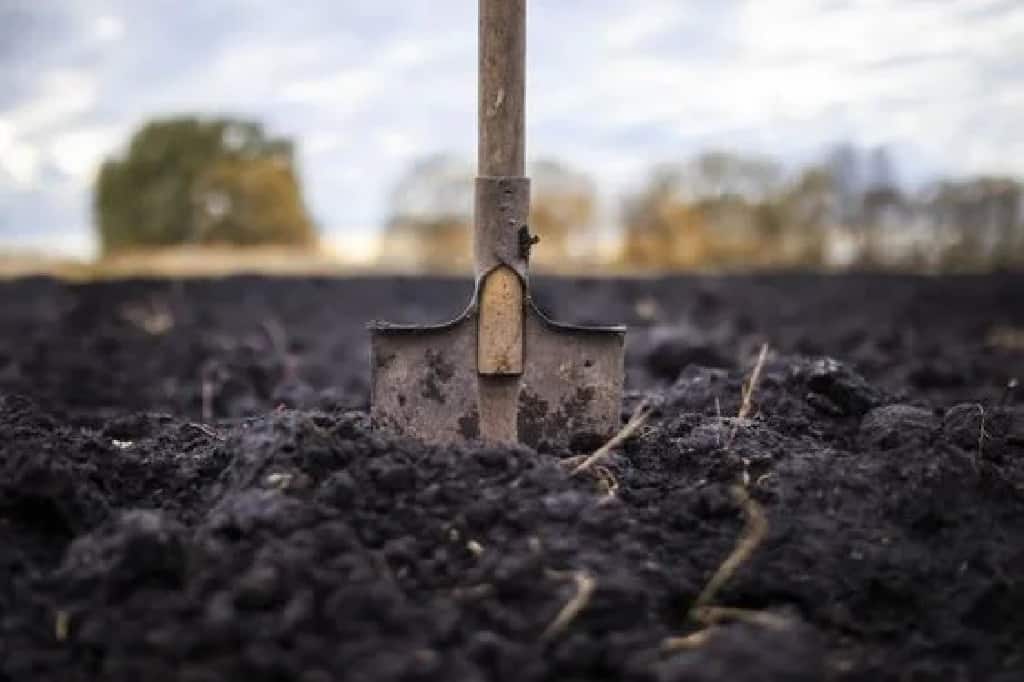
The application of boiling water can influence the physical structure of the soil. The interplay between heat and soil composition can lead to transformations in texture and drainage patterns.
As soil structure shifts, alterations in texture and drainage become apparent. Vigilant gardeners must be attuned to these changes and adapt their care routines accordingly.
To counterbalance potential disruptions, gardeners can employ mitigation strategies. These measures safeguard the soil’s optimal conditions and mitigate any adverse consequences of the sterilization process.
Will Boiling Water Treatment Change the PH of My Soil?
Boiling water treatment alone is unlikely to significantly change the pH of your soil. Numerous elements, rainfall, and the composition of the soil all affect the pH of the soil. However, there are methods to modify the pH of the soil if necessary. Here are some key points to consider:
- Aluminum sulfate and sulfur: Aluminum sulfate can instantly change the soil pH by producing acidity when it dissolves in the soil. Sulfur is another common amendment used to decrease soil pH. Elemental sulfur is relatively inexpensive but takes time to react and lower the pH.
- Lime: To make soils less acidic, the common practice is to apply a material that contains lime, such as ground agricultural limestone. The finer the limestone particles, the more rapidly it becomes effective. Different soils require different amounts of lime to adjust the pH, and factors like soil texture, organic matter content, and the plants to be grown should be considered.
- Organic matter: Adding compost, manure, or organic soil amendments like alfalfa meal can increase the nitrogen level of the soil and gradually decrease the pH.
- Soil testing: It is important to measure the pH of your soil before making any adjustments. Soil testing will give you a baseline to work from and help you determine the appropriate amendments needed to modify the pH.
- Timeframe: It’s important to note that changing the pH of soil is not an immediate process. It may take several months for the amendments to take effect and for the pH to reach the desired level.
It’s always recommended to consult with local agricultural suppliers, garden centers, or extension services for specific recommendations based on your soil type and region. They can provide guidance on the best methods and amendments to use for modifying the pH of your soil effectively.
Table: Pros and Cons of Boiling Water Soil Sterilization
Here’s a quick summary of the advantages and disadvantages of using boiling water for soil sterilization:
| Pros | Cons |
| Effective in killing harmful pathogens | Kills beneficial microorganisms |
| Can be used for spot treatments | Compact soil structure |
| Chemical-free and organic | Requires careful application to avoid harm |
| Inexpensive and readily available | Not practical for large garden areas |
Alternatives to Boiling Water Sterilization
Given the potential drawbacks, it’s essential to explore alternative methods for soil sterilization. Here are some effective options that are gentler on the soil ecosystem:
1. Solarization
Solarization involves covering the soil with a transparent plastic sheet to trap solar heat. The accumulated heat raises the temperature of the soil, effectively killing pathogens and weed seeds. This method allows the soil to retain some beneficial microorganisms and maintain soil structure.
2. Steam Sterilization
Using steam for soil sterilization is less damaging than boiling water. Steam can effectively eliminate pathogens and weed seeds without raising the soil temperature to the point of compaction. Specialized steam machines are available for this purpose.
3. Mulching
Mulching with organic materials can suppress weed growth and create an environment that is unfavorable for pathogens. Organic mulches also contribute to soil fertility as they break down over time.
Read: Can You Use Black Mulch Around Trees?
4. Crop Rotation
Crop rotation is a natural and beneficial way to disrupt pest and disease cycles in the soil. By changing the types of plants grown in different areas of the garden, you can reduce the build-up of specific pathogens.
Conclusion
When it comes to addressing localized soil issues, boiling water might seem like a convenient solution. However, its scope becomes limited when applied to larger areas due to certain drawbacks.
While boiling water can provide immediate benefits, the potential harm it might inflict on beneficial microorganisms and the delicate soil structure should not be underestimated. On a broader scale, a more comprehensive and sustainable approach to soil sterilization is needed, one that takes into account the intricate balance of the ecosystem beneath our feet.
In contrast to boiling water, which can have adverse effects on the soil ecosystem, solarization emerges as a more practical choice, especially for larger expanses. This technique capitalizes on the sun’s natural heat, effectively eliminating harmful pathogens without causing harm to the beneficial components of the soil. Another viable method is steam sterilization, which employs the power of steam to sanitize the soil while minimizing negative repercussions.
The risks associated with using boiling water for soil sterilization are not limited to their immediate impact. Pouring hot water onto the ground can disrupt soil fertility and compromise the overall health of the ecosystem. High temperatures have the potential to alter soil composition, potentially leading to long-term consequences.
Therefore, when making decisions about soil sterilization methods, it’s essential to consider the broader implications and how they tie into the intricate dance of the soil ecosystem.
By opting for approaches that prioritize both pathogen control and soil health, gardeners set the stage for a flourishing garden that thrives in harmony with its surroundings.
FAQs on Impact of Hot Water on Soil Quality
Can I use hot water to sterilize garden soil?
Yes, hot water can be used for soil sterilization. Boiling water is a common method to kill pathogens, weed seeds, and pests in small garden areas or for spot treatments.
What temperature is needed to kill soil pathogens using boiling water?
Boiling water, at a temperature of 212°F (100°C), is sufficient to kill most soil pathogens and weed seeds on contact.
Will boiling water treatment affect my plants negatively?
Boiling water treatments can harm beneficial microorganisms and soil structure if used extensively. It is best suited for spot treatments rather than large-scale applications.
How often should I sterilize my garden soil using boiling water?
Soil sterilization with boiling water should be used sparingly and only when necessary. Regular applications may disrupt the soil ecosystem and affect soil health negatively.
Is boiling water an effective method to eliminate all soil pathogens?
While boiling water can kill many soil pathogens and weed seeds, it may not be 100% effective. Some hardy pathogens may survive or recontaminate the soil after treatment.
Can I reuse soil after boiling water sterilization?
Yes, you can reuse the soil after boiling water sterilization. However, it’s essential to reintroduce beneficial microorganisms through compost or organic matter to restore soil health.
Are there any specific plants that benefit from boiling water sterilization?
Plants that grow in containers or small garden plots may benefit from spot treatments with boiling water to control weeds and pests without affecting the entire garden.
How can I monitor the success of soil sterilization using boiling water?
Monitor the success of soil sterilization by observing plant health and growth. Additionally, conduct soil tests periodically to assess changes in soil nutrients and microbial activity.

